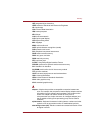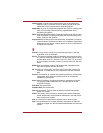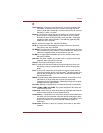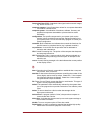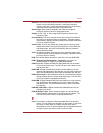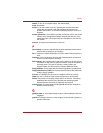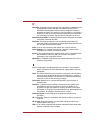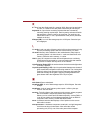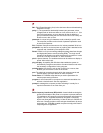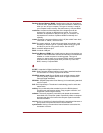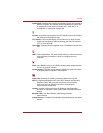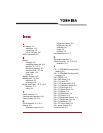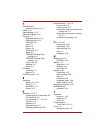
Users Manual Glossary-10
Glossary
mode: A method of operation, for example, the Shut Down Mode, Sleep
Mode or the Hibernation Mode.
modem: Derived from modulator/demodulator, a device that converts
(modulates) digital data for transmission over telephone lines and
then converts modulated data (demodulates) to digital format where
received.
monitor: A device that uses rows and columns of pixels to display
alphanumeric characters or graphic images. See also CRT.
motherboard: A name sometimes used to refer to the main printed circuit
board in processing equipment. It usually contains integrated
circuits that perform the processors basic functions and provides
connectors for adding other boards that perform special functions.
MP3: An audio compression standard that enables high-quality
transmission and real-time playback of sound files.
network: A collection of computers and associated devices that are
connected by communications facilities. A network allows you to
share data and peripheral devices, such as printers, with other
users and to exchange electronic mail.
non-system disk: A disk for storing programs and data that cannot be
used to start the computer. Compare system disk.
nonvolatile memory: Memory, usually read-only (ROM), that is capable of
permanently storing information. Turning the computers power off
does not alter data stored in nonvolatile memory.
numeric keypad overlay: A feature that allows you to use certain keys on
the keyboard to perform numeric entry, or to control cursor and page
movement.
OCR: Optical Character Recognition (reader). A technique or device that
uses laser or visible light to identify characters and input them into a
storage device.
online state: A functional state of a peripheral device when it is ready to
receive or transmit data.
operating system: A group of programs that controls the basic operation
of a computer. Operating system functions include interpreting
programs, creating data files, and controlling the transmission and
receipt (input/output) of data to and from memory and peripheral
device.
output: The results of a computer operation. Output commonly indicates
data. 1) printed on paper, 2) displayed at a terminal, 3) sent through
the serial port of internal modem, or 4) stored on some magnetic
media.



